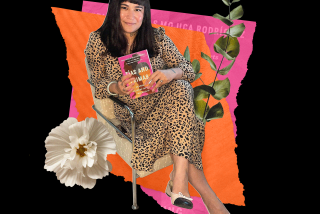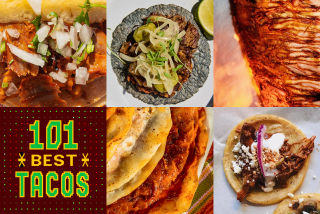In Oaxaca, Mexico, love blooms again and again
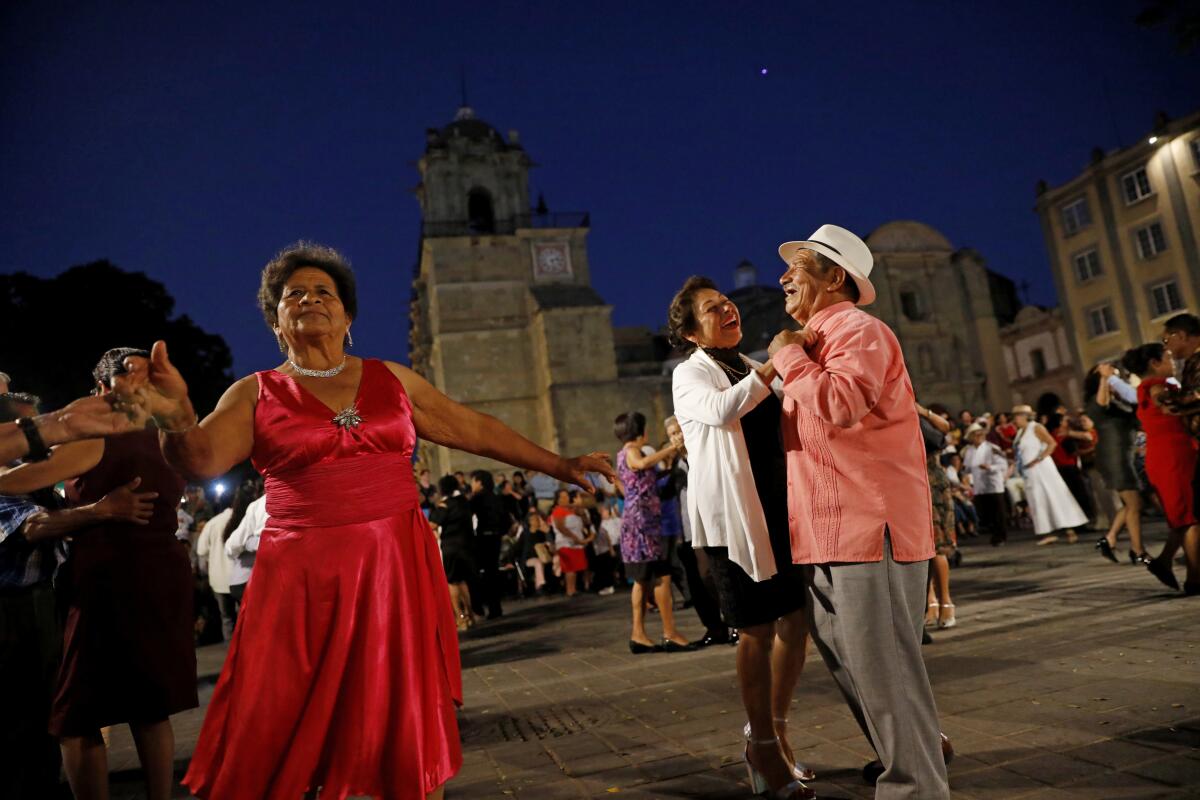
- Share via
OAXACA, Mexico — Sometimes we travel with a sense of urgency because over time something inside us has gone dim.
Years ago, that’s what drew me to Oaxaca.
I lived alone in Oregon, a misty place where it was so rare to find anyone who looked like me I once chased down a stranger in the grocery store produce section and asked him to lunch because I heard him pronounce “mango” with a Spanish accent.
Starved for color, I booked a flight to this city in southwestern Mexico that I’d heard so much about. I had no way of knowing then just how much Oaxaca would wrap itself around my life for years to come, starting with the first phone call.
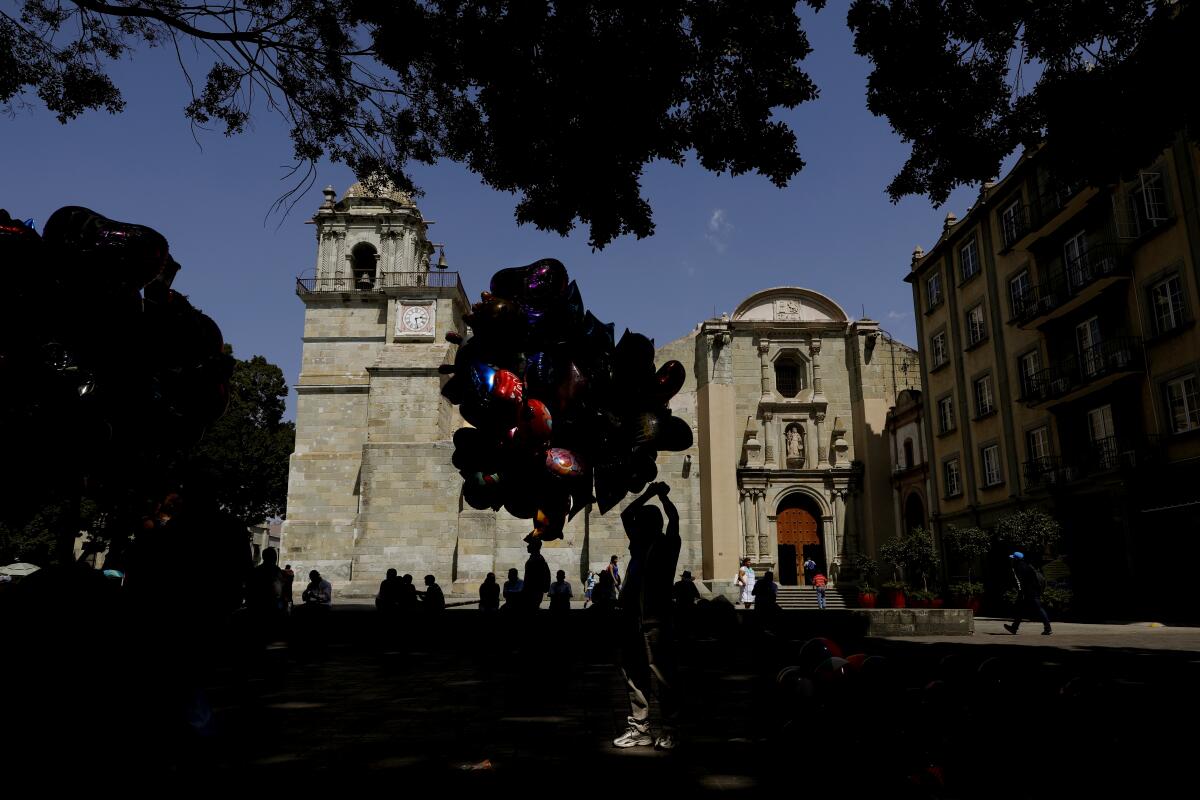
A friend suggested Las Bugambilias (lasbugambilias.com), a quaint bed-and-breakfast near the center of town, so I called to make a reservation. The woman on the phone said she was booked solid.
“This time of year,” she told me, “you won’t find a place anywhere else.”
It was July, after all, a week before La Guelaguetza, Oaxaca’s biggest fiesta. Stumped, I was about to hang up, but then the woman on the other end of the line made me an offer unheard of in those pre-Airbnb days:
“If you want, you can stay at my house,” she said. “My family will be in Texas. You’ll have the place to yourself.”
Weeks later, I met Aurora. She was gracious and easygoing. She handed me the keys to her two-story house tucked behind a courtyard. For $20 a night, I spent the week sleeping on her son’s twin bed chaperoned by his small army of stuffed animals.
The first full day I awoke without plans — no map of the city, no travel guide, no list of top restaurants. I wanted to get to know Oaxaca bit by bit, to let Oaxacans show me their city.
When I found my way to Calle Macedonio Alcalá, the main strip, I was mesmerized by the scene: Dozens of Oaxacans in their Sunday best filled the plaza outside Santo Domingo Church. Fathers held hands with their daughters. Boys gathered on the pavement for an intense game of marbles. Women dressed in traditional indigenous huipiles and colorful wraparound skirts sat in the shade selling rebozos (shawls) and sombreros.
Suddenly, there was a blast of fireworks. Then, booming live music. Trumpets, trombones, saxophones.
Everyone looked up as a 12-piece brass band marched down the cobblestone street. Behind the musicians came two dozen dancers in jewel-tone gowns, each balancing a basket of roses on their head. Behind them, two 10-foot-tall papier-mâché puppets carefully maneuvered far above the heads of two ruddy-faced boys.
This must be a major holiday, I thought. Maybe a tribute to Oaxaca’s most revered saint. I ran up to a trombone player and asked what they were celebrating.
“A little boy’s birthday,” he said. His name was Carlitos, and he had just turned 3.
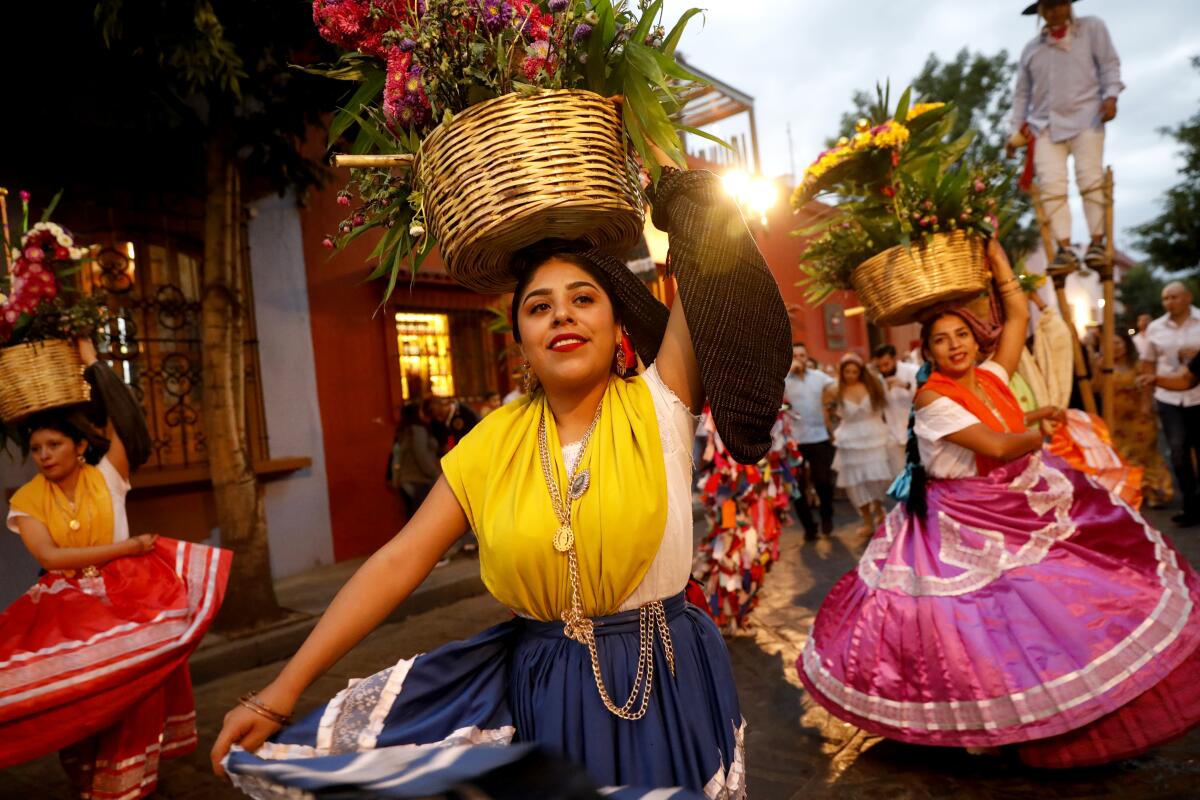
I soon learned these elaborate parades, known as calendas, date back centuries. They happen almost daily in Oaxaca. It’s how locals celebrate just about every milestone: baptisms, weddings, funerals, divorces, pregnancies, home purchases, store openings.
In Mexico, the state of Oaxaca is the king of fiestas. Year-round, its nearly 600 towns elect mayordomos (fiesta mayors) to host local parties for their patron saint. Many towns also compete annually in the state’s most exclusive event: La Guelaguetza. Thousands of people flood the capital those two weeks to see the region’s finest musicians and dancers.
I missed the big show by a couple of days, but there was so much to see that week that I stuck close to the city center. I floated from old churches to shops, museums, cafes and bookstores. I drank lots of fresh-squeezed jugo verde and got by on street food: $3 enfrijoladas, tortillas drenched in a creamy bean purée, and $4 tlayudas, pizza-sized tortillas topped with beans, quesillo, avocado and salsa.
Every day, I walked to Nieves Oaxaqueñas Chagüita, an ice cream stall inside Mercado Benito Juárez, where I diligently tried to tackle the menu of nearly 40 homemade flavors: tequila, cajeta, arroz con leche, passion fruit, leche quemada (burnt milk) and mamey (a sweet, creamy tropical fruit).
Sundowns I spent in the zócalo, the bustling heart of the city, where every night magicians put on shows, comedians told jokes and kids ran around tossing giant balloons toward the sky. There were live orchestras, cumbia concerts and marimba shows. Some nights couples dressed in heels and suits to dance, cheek to cheek, in danzones.
That week more than a decade ago, dozens of protesters occupied the zócalo with tents and signs. Locals weren’t fazed. Many are used to teachers mounting demonstrations that last months. Most of the protests are peaceful, but some have wreaked havoc on Oaxaca. In 2006, one labor dispute resulted in at least 17 deaths, including one American journalist.
By the time I reached the city, Oaxacans were just beginning to recover.
My trip ended so soon that the next year I returned to celebrate my 30th birthday. My boyfriend, David, and I stayed at a charming bed-and-breakfast called Estancia de Valencia (oaxacabedandbreakfast.com.mx), where owner Lorena Santos became a fast friend.
We focused on exploring Oaxaca’s renowned food and ventured to nearby towns: Teotitlán del Valle, where weavers make masterful rugs, and San Bartolo Coyotepec, known for black pottery. We also went to Tlacolula, home to one of the oldest indigenous outdoor markets.
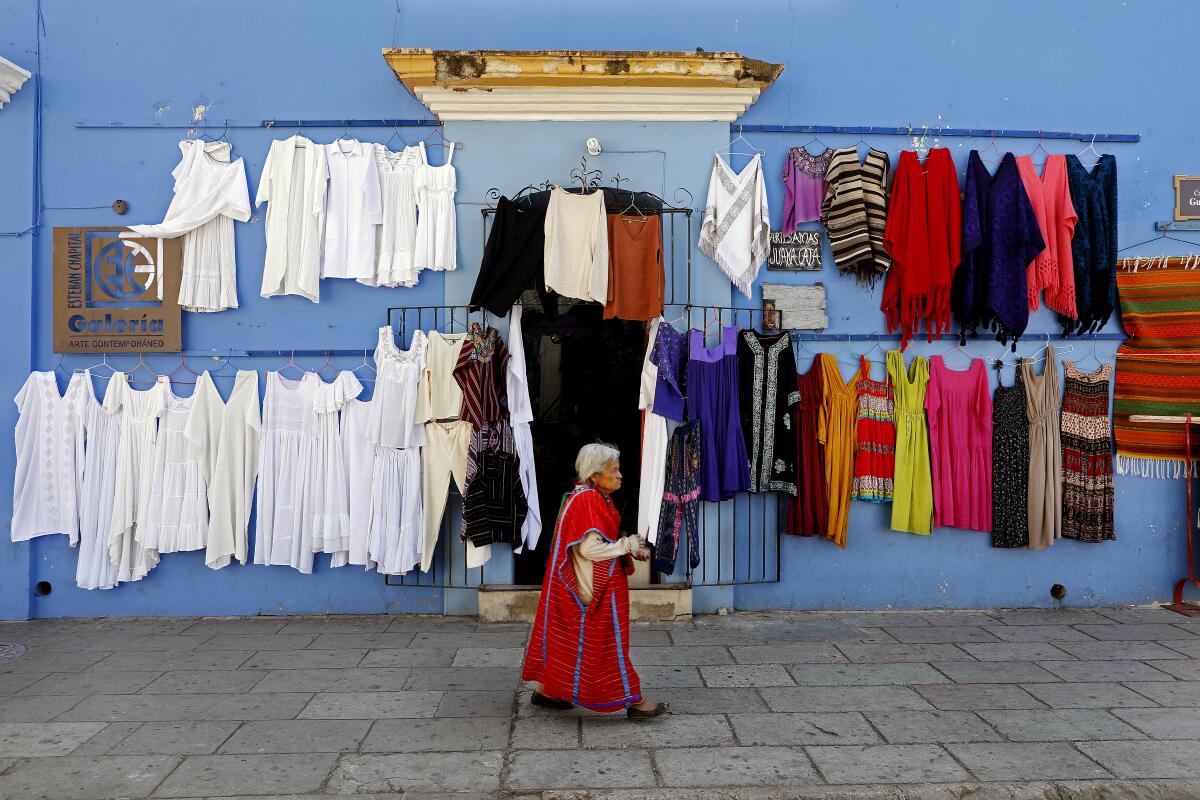
David fell in love with the city. As an artist, he was overwhelmed by the colors. He would sneak out before sunrise to photograph locals and chase calendas up the cobblestone paths. One night, we laughed so much after I lost him in the zócalo and he reappeared, moments later, his face painted like a clown.
To us, this trip was much more than a vacation. Oaxaca was warm and inspiring. It embraced us, let us in on precious traditions Oaxacans have nurtured for generations.
Colorful reminders
For my first few years at the Los Angeles Times, I kept the walls of my gray cubicle plastered with photos from Oaxaca: the brass bands, dancers, textiles and flowers from the market. Whenever I met Oaxacans, I’d tell them how lucky they were to call such a special place home.
In the summer of 2011 a funny thing happened. David and I got engaged, and we began planning a big farm-style wedding. We had a venue, a priest, a caterer and a guest list that grew longer each day. My Salvadoran family was huge, and David’s Armenian family was tight-knit and included lots of friends.
The more we thought of the day, the more we realized this celebration didn’t feel at all like us.
One rainy afternoon, as we sat in our tiny apartment swamped by to-do lists, David said: “Let’s go to Oaxaca. Let’s forget all of this, and just get married in Oaxaca.”
The moment he said it, it made absolute sense.
We canceled everything and called Lorena Santos, who had hosted us on our last trip.
Lorena’s family was among the first to start a bed-and-breakfast in Oaxaca. In the 1980s, her mother-in-law, Conchita, turned the beautiful home where she’d raised her children into La Casa de Mis Recuerdos (lacasademisrecuerdos.com), a bed-and-breakfast built around a lush courtyard covered with bougainvillea. I knew that courtyard was where I wanted to get married.
A few minutes into the call, Lorena, a firecracker of a woman who had never planned a wedding, cheerfully volunteered to handle everything.
Telling the family
“We’re going to Oaxaca!” I told our families.
“Wa-WHO-kuh?” my soon-to-be mother-in-law asked. It took many of our invitees days just to learn how to say the name. Much of our family had not traveled in decades. Some had never left the U.S., never boarded a plane or didn’t speak Spanish. They were nervous about parachuting into a place they’d never been to.
In March 2012, our wedding party — a motley crew of nearly 50 Salvadorans and Armenians — descended on Oaxaca. We purposely didn’t give our guests a map of the city, travel guide or list of top restaurants. We wanted them to explore the city, bit by bit, on their own.
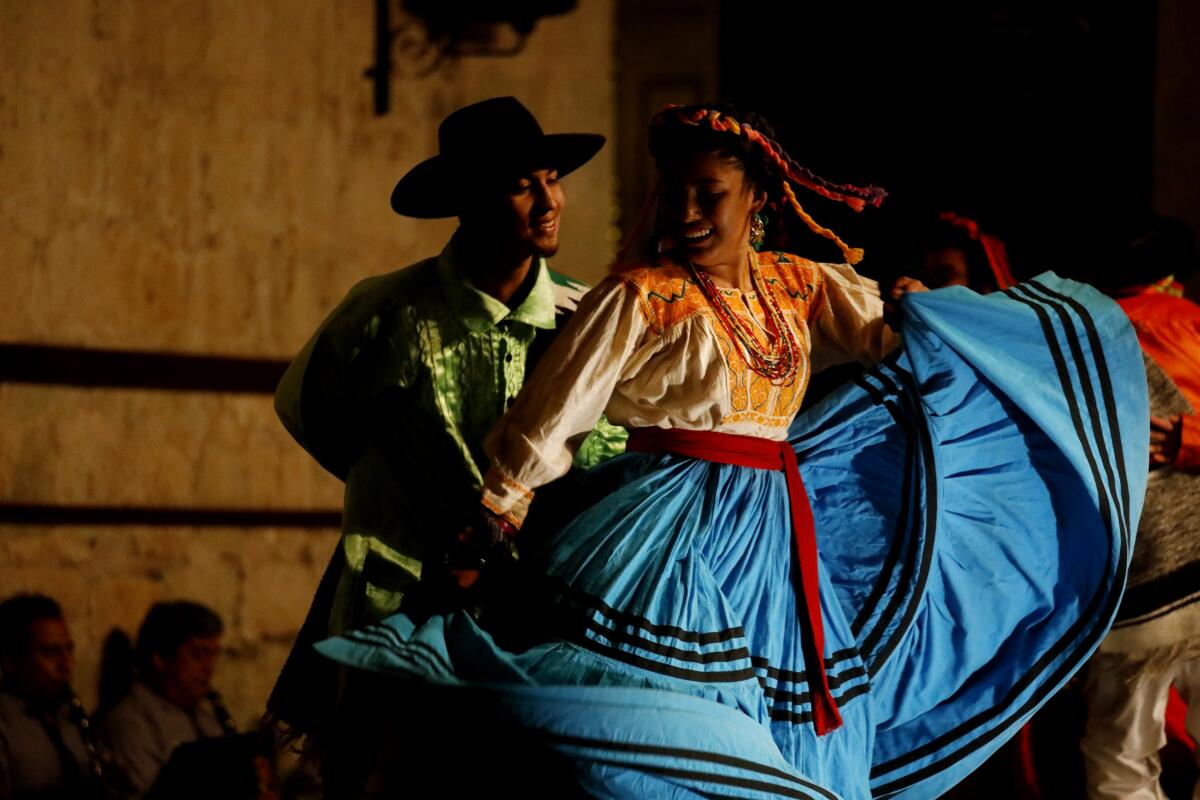
Within a day, we were amazed to see my aunts happily wandering the Juárez market and my soon-to-be father-in-law comfortably strolling down Alcalá with a sombrero on his head and a bottle of mezcal in one hand.
“Oh, Esme,” he kept telling me, smiling ear to ear. “I love this place very much.”
When the time came to celebrate our wedding calenda, we paraded down the cobblestone path, dancing with the booming brass band and two 10-foot-tall bride and groom puppets.
That evening, our family and friends partied so hard in Conchita’s courtyard that two of our dancers collapsed on top of a potted plant, shattering it.
A waiter came up to me at the end of the fiesta. He carried a pair of red stilettos in one hand and a silk necktie in the other.
“We found these in the bushes, señora,” he said, smiling.
The tie belonged my husband. The stilettos to one of my many aunts, who, like everyone else, had made the most of the tequila.
A new chapter
Years later, David and I returned to that same courtyard, this time with our first child.
It was Christmas and our daughter was 2 years old. She wandered into the shade of the bougainvillea and was immediately mesmerized by the scene.
Conchita was hosting a small gathering. On the ground, she had lovingly created something she does every year in painstaking detail: It was a Nativity scene. Much like an ancient city, it had tiny trees and rolling hills, a running stream, miniature houses, shepherds and sheep.
When another visitor grabbed his guitar and broke into song, our daughter smiled.
She wiggled her feet and danced her first dance in Oaxaca.
More to Read
Sign up for The Wild
We’ll help you find the best places to hike, bike and run, as well as the perfect silent spots for meditation and yoga.
You may occasionally receive promotional content from the Los Angeles Times.
